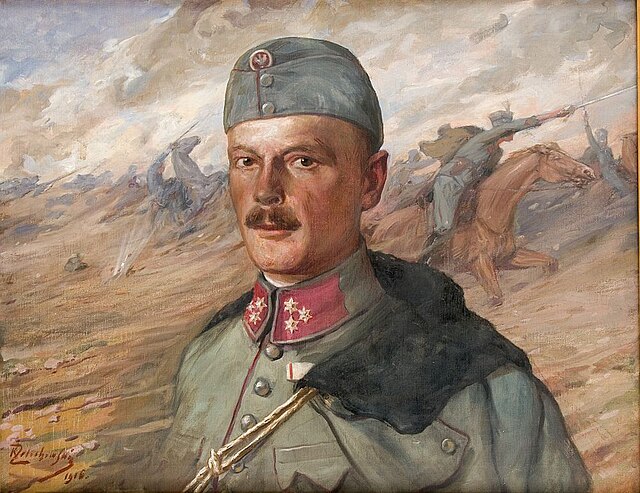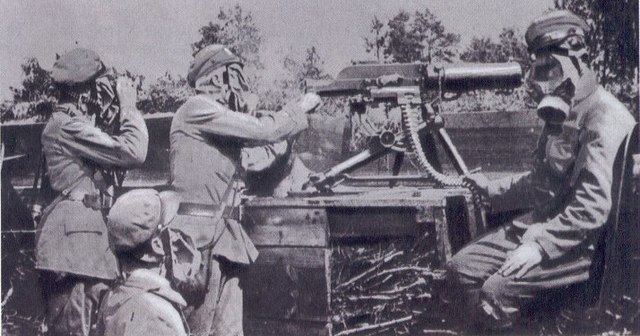The Charge of Rokitna was a charge of a cavalry squadron of the 2nd Brigade of Polish Legions, fighting for the Austro-Hungarian Army. It took place on June 13, 1915 near the village of Rokytne, which at that time was part of Bessarabia Governorate. A Polish squadron of 70 uhlans, led by Rittmeister Zbigniew Dunin-Wasowicz, attacked positions of the Imperial Russian Army. The battle resulted in a Polish pyrrhic victory: out of 70 soldiers, 17 Poles were killed and 23 were wounded. Russian losses are unknown.
Charge of Polish uhlans
Zbigniew Dunin-Wasowicz
Monument of the uhlans, Rakowicki Cemetery
Polish Legions in World War I
The Polish Legions was a name of the Polish military force established in August 1914 in Galicia soon after World War I erupted between the opposing alliances of the Triple Entente on one side and the Central Powers on the other side, comprising the German Empire and Austria-Hungary. The Legions became "a founding myth for the creation of modern Poland" in spite of their considerably short existence; they were replaced by the Polish Auxiliary Corps formation on 20 September 1916, merged with Polish II Corps in Russia on 19 February 1918 for the Battle of Rarańcza against Austria-Hungary, and disbanded following the military defeat at the Battle of Kaniów in May 1918, against Imperial Germany. General Haller escaped to France to form the Polish army in the West against the anti-Polish German-Bolshevik treaty.
Col. Józef Piłsudski with his staff in front of the Governor's Palace in Kielce, 1914
Col. Józef Piłsudski and his officers, 1915
Pilsudski in Otwock, 1915
II Brigade of the Polish Legions in Volhynia c. 1915-16







